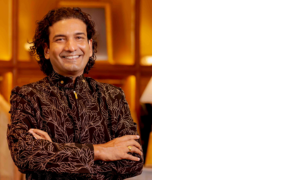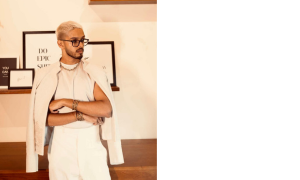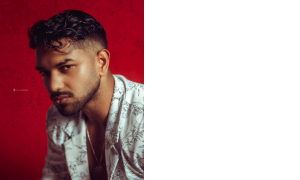
Jun 23 2025.
views 30By Gayantha Perera
Recently, I was at an event, and a rather fierce personality and iconic individual was wearing a tulle skirt and a blazer as their outfit. It was an amazing ensemble; from the colours to the way the accessories were paired, it was simply stunning. I couldn’t help but think out loud, “Why didn’t I think of this?”. And all this person had to smile and say was “You should just do it!”. I laughed and thought… Yeah, I can, but why don’t I?
It's 2025, and the line between what men would wear and what women would wear has blurred so much that separate sections in stores are almost obsolete. In a 2022 survey, 36% of U.S. consumers had purchased fashion outside their gender identity, followed by Sweden (33%) and the UK (31%). In a world where regular or loose fit is currently king, girls who like men's athleisure or tailoring are killing it in the style department. Men are also finding interesting uses for ladies' compression wear and ladies’ tops that make for extremely fashion-forward inner layers or top layers, even the ever-so-trendy cropped jackets are not safe.
The mid-2020s will forever be gender-neutral fashion day for me, and Gen-Z is leading the charge. A study by Fashion Law Journal quotes that around 50% of Gen-Z online shoppers globally have purchased gender-fluid fashion, and 70% say they are interested in purchasing more in the future.
But coming to our shores, the pearl of the Indian Ocean, it seems that pearls are still expected only on women’s ears. My personal forays into gender-bending fashion have been quite limited. A pair of denim from a ladies’ section here and there, a blouse that looked like a perfect shirt or top with a suit maybe, and on a rare occasion, a dress for a runway show. However fashion-forward ‘Colombo people’ might be, I’ve never felt comfortable bending the rules for an outfit for myself outside of those moments. I feel confident in saying that it's really not my aesthetic. But part of me also wonders if it's just my conservative Christian upbringing whitewashing my mind, trying to colour outside the lines.
Sri Lanka has always had rigid views on genders and the way they dress, and much of the LGBTQI+ community will admit that dressing for one’s personal choice might not be the safest bet all the time, even in the city of Colombo. But in 2025, why is that the norm? I once had the pleasure of advising a client who couldn’t get himself to buy a pink tie at a leading men's fashion store because people might make fun of him. I recently had trouble convincing a female celebrity about the trend of masculine tailoring for an outfit because she was unsure about how her male fans would respond to her feminine curves being hidden. And even more recently, a Facebook post that featured ladies’ innerwear by a garment producer in the country on a visibly male model went viral and exposed how even in Colombo, it was still not safe to be inclusive, even in theory.
So the short of it is, it's prejudice; internal and external. The solution is clearly work that needs to begin within our industry to educate everyone that it is a clear fact that clothing & fashion are quite genderless. From dressing mannequins with gender swaps to advertising gender-swapped outfits for the models featured. Even when public figures embrace the freedom to dress devoid of gender, it normalises it for everyone. But most of all, training for retail sales staff to welcome all shoppers without judgment or assumptions would be key; a memorable exchange with staff of a leading retail store in Colombo comes to mind, where a sales girl couldn’t believe I was shopping for pants in the ladies section and went to great lengths to explain it to me, assuming I didn’t understand her heavy accent.
My personal belief is, if you like it and you find it in a size that fits you, buy it and wear it, and I hope you have the confidence to wear it wherever you want to. But that’s just me. I think the whole country needs vocal proponents in every sphere that allow any gender to wear what they want. Here are a few worth mentioning from the men's fashion industry.
Shan De Silva, to me, is a modern advocate of the cause I mention here. “The real sign of evolution in Lankan masculinity and fashion is the realisation, recognition and celebration of the fact that masculinity and femininity go hand in hand. Regardless of gender.” They embody the fluidity of Fashion and look great in anything as a leading model from the fashion industry.

Pictured: Shan De Silva
“The beauty is that each generation defines its own gender norms. I’m proud to see a more peaceful, confident, ambitious, and open-minded Sri Lankan masculinity emerging among Millennials and Gen Z. Young men are embracing LOVI’s Sri Lankan style far more than older generations. So we can all hope for a better future!” says Asanka De Mel, founder of LOVI Sarongs.

Pictured: Asanka De Mel
"I don’t dress to fit into boxes of ‘masculine’ or ‘feminine’—I dress to express,” says Designer Vinol Ruwanweliarachchi. “My style blends tradition with modern elegance, where every piece tells a story beyond convention."

Pictured: Vinol Ruwanweliarachchi
But as all opinions are valid, Amandha Amarasekara, a leading men's fashion content creator, shared, “I believe that while fashion is inherently genderless, the distinction between men’s and women’s fashion is what gives each its unique identity and deserved recognition. In Sri Lanka, though Western influences are softening rigid norms, I remain a strong advocate for preserving masculinity in men’s fashion with a clear, intentional boundary.”

Pictured: Amandha Amarasekara
0 Comments